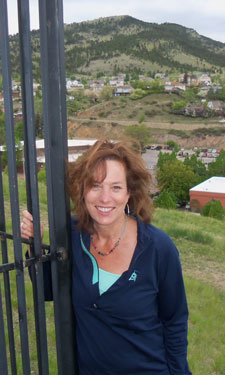 Steeped in nature from an early age, Director of Helena, Montana, Parks and Recreation Amy Teegarden quickly developed a taste for adventure and the outdoors. “I was born and raised in St. Joseph, Missouri,” she says. “Family outings often consisted of day hikes at nearby wildlife refuges and conservation areas or fishing. After several backpacking trips in the Snowy Range and the Wind River Mountains of Wyoming, and volunteering with trail building crews in Colorado, I got hooked on the west!” The rest, as they say, is history. Teegarden got her degree in parks and recreation administration at the University of Wyoming and enjoyed a “colorful” stint with the United States Forest Service before settling down in Helena, her home of the past 24 years. She’s served as director for the past eight years, and in that time has made major impacts on health policies at her agency. We asked Teegarden to elaborate on her experience establishing a tobacco-free policy and other wellness initiatives currently in the works.
Steeped in nature from an early age, Director of Helena, Montana, Parks and Recreation Amy Teegarden quickly developed a taste for adventure and the outdoors. “I was born and raised in St. Joseph, Missouri,” she says. “Family outings often consisted of day hikes at nearby wildlife refuges and conservation areas or fishing. After several backpacking trips in the Snowy Range and the Wind River Mountains of Wyoming, and volunteering with trail building crews in Colorado, I got hooked on the west!” The rest, as they say, is history. Teegarden got her degree in parks and recreation administration at the University of Wyoming and enjoyed a “colorful” stint with the United States Forest Service before settling down in Helena, her home of the past 24 years. She’s served as director for the past eight years, and in that time has made major impacts on health policies at her agency. We asked Teegarden to elaborate on her experience establishing a tobacco-free policy and other wellness initiatives currently in the works.
Parks & Recreation magazine: What inspired you to go tobacco-free in Helena’s parks and recreation spaces?
Amy Teegarden: Making the [professional] leap from federal to local government was somewhat intimidating, but very exciting! As I was acclimating to my “new surroundings,” I began questioning the department’s existing functions and what had been done in the past. I realized quickly that for our department to be competitive (for limited funding), we needed to stay relevant and get involved with the critical issues of our community. It was important for us to be part of the conversation and that conversation, more often than not, was centered on community health and the role that parks and trails play in supporting physical activities.
In 2011, our department was awarded an ACHIEVE (Action Communities for Health, Innovation and EnVironmental ChangE) grant from a partnership between NRPA and [the U.S.] Centers for Disease Control and Prevention. The ACHIEVE experience helped me “connect the dots” and increased my overall awareness and understanding of the role of parks and recreation beyond the traditional “fun and games department,” to that of realizing we can influence our community’s health and economic well-being by focusing on policies, systems and the built environment. The goal of developing a tobacco-free policy for Helena’s developed parks was first identified as part of our ACHIEVE community action plan. As a result of the community assessment and focus group discussions, the desire for a tobacco-free parks policy gained momentum.
P&R: What other health-based initiatives are you working on?
Teeegarden: From a programming standpoint, we are expanding our ParkFit program to include free yoga sessions and personal fitness classes in the parks. We continue to work with the health department on planning an Active Living Wayfinding System to increase participation in physical activity and improve access to nutritious food programs and other healthy living opportunities by providing uniform signage and supporting material. We are currently constructing a garden park with a variety of community partners. The 6th Ward Garden Park is a re-purposed park in an underserved neighborhood and adjacent to the public transit station that will be managed as an edible ecosystem. One of the park’s primary purposes is to grow food for local edible forest and community gardeners and Helena Food Share. We continue to manage RxTrails, working with local physicians who “prescribe” walking various park trails to their patients.
P&R: Why do you feel it is important to make the connection between parks, recreation and health?
Teegarden: Making this connection is vital because it is important to direct resources to critical issues of our community by delivering programs and services that lead to improved results and support.
Helena Parks and Recreation recognizes the importance of seeing ourselves as a department that provides critical community connections by eliminating barriers and strengthening the connections between parks and people. These connections are supported from a variety of efforts as simple as the installation of new play equipment and the development of community gardens, to the expansion of a trail system and even the passage of tobacco-free parks policy.
— Samantha Bartram, Executive Editor of Parks & Recreation magazine

